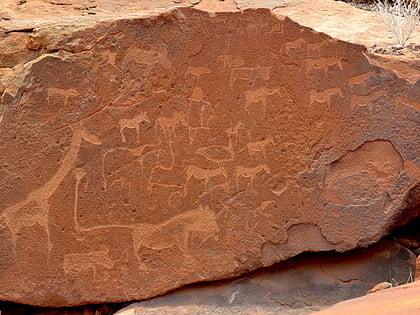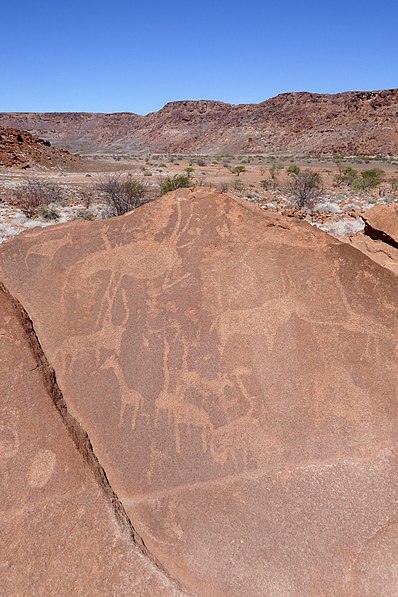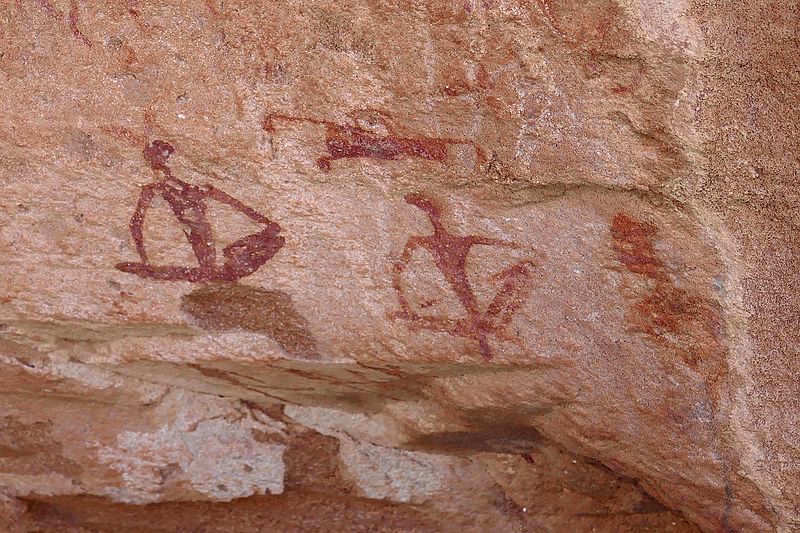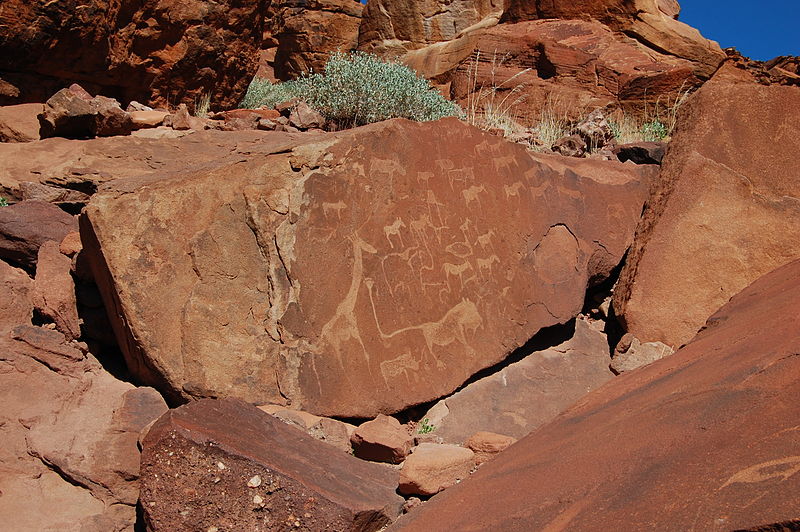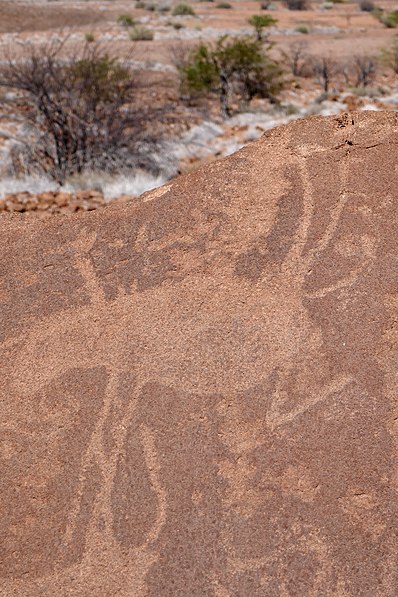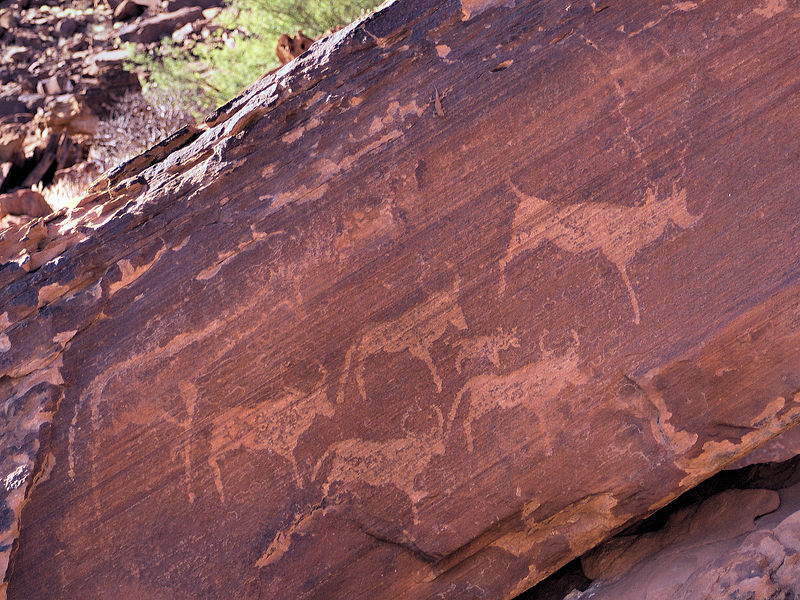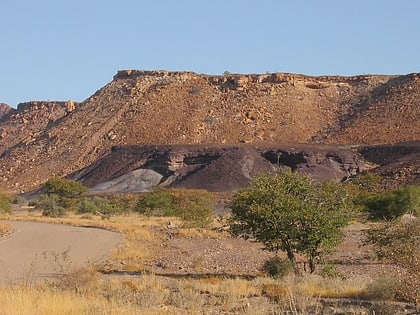Twyfelfontein
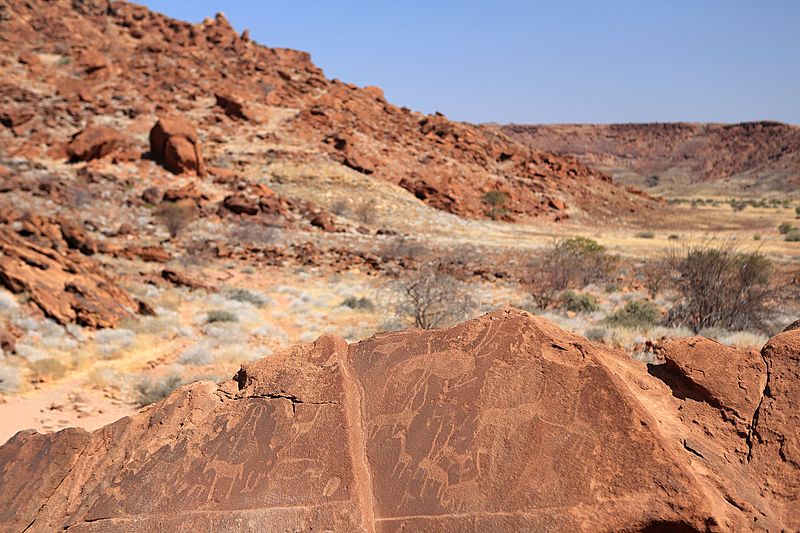
Facts and practical information
Twyfelfontein, nestled in the Kunene Region of Namibia, is a prehistoric marvel that beckons archaeology enthusiasts and history buffs alike. This UNESCO World Heritage Site harbors one of the most significant concentrations of rock engravings in Africa, with over 2,500 figures etched into the red sandstone formations. These ancient carvings, believed to be around 6,000 years old, were created by the hunter-gatherer communities that once thrived in this arid landscape.
The name Twyfelfontein translates to "doubtful fountain," a moniker that reflects the unreliable water supply that early inhabitants faced in this desert terrain. Despite the harsh conditions, the area's rich variety of rock art provides a window into the spiritual and daily life of the San people. The engravings depict a range of subjects, from animals such as giraffes, rhinoceroses, and lions, to human figures and geometric patterns, all telling a story of the symbiotic relationship between humans and their environment.
The site is not just an archaeological treasure trove but also a testament to the San people's deep understanding of the natural world. The engravings are thought to represent ritual practices, including shamanic trance dances, and were possibly used as a means to communicate with the spirit realm to ensure successful hunting expeditions.
Visitors to Twyfelfontein will find themselves transported back in time as they wander through the open-air gallery of ancient art. The site is well-preserved, thanks to the arid climate and the efforts to protect this invaluable cultural heritage. The rock art serves as a poignant reminder of the enduring human urge to record and communicate experiences, beliefs, and narratives.
Kunene
Twyfelfontein – popular in the area (distance from the attraction)
Nearby attractions include: Burnt Mountain.
